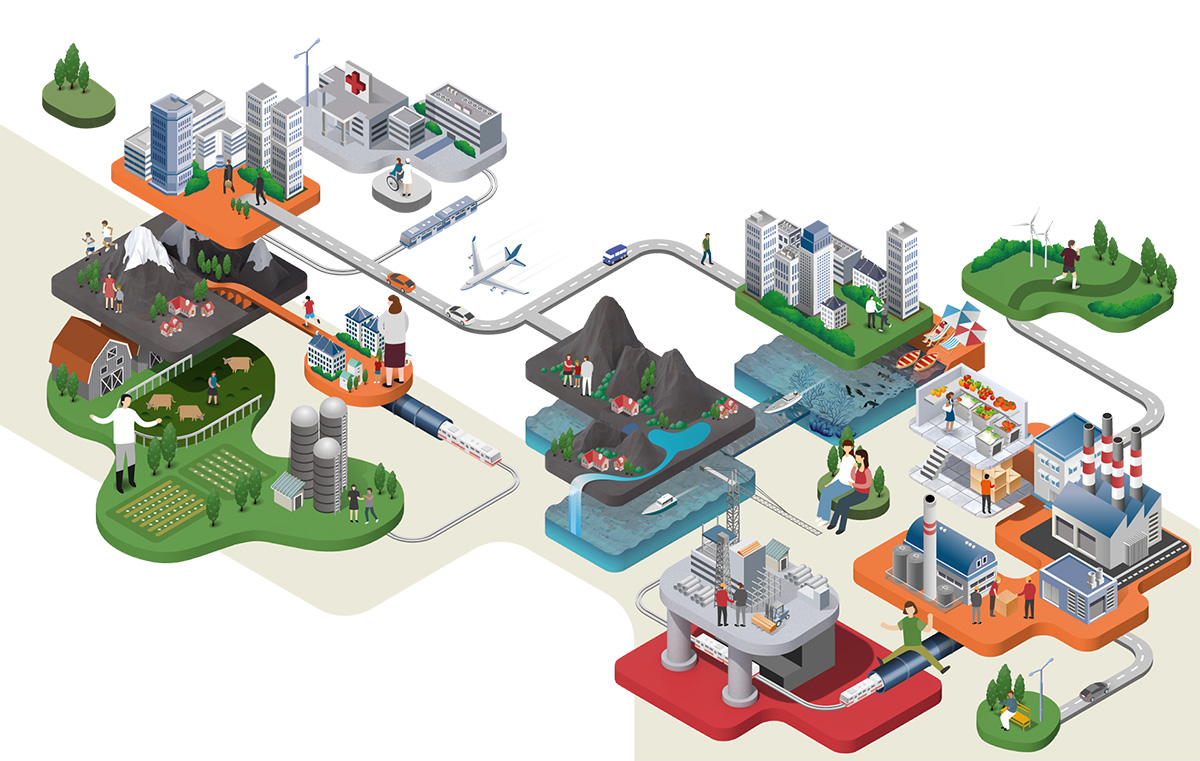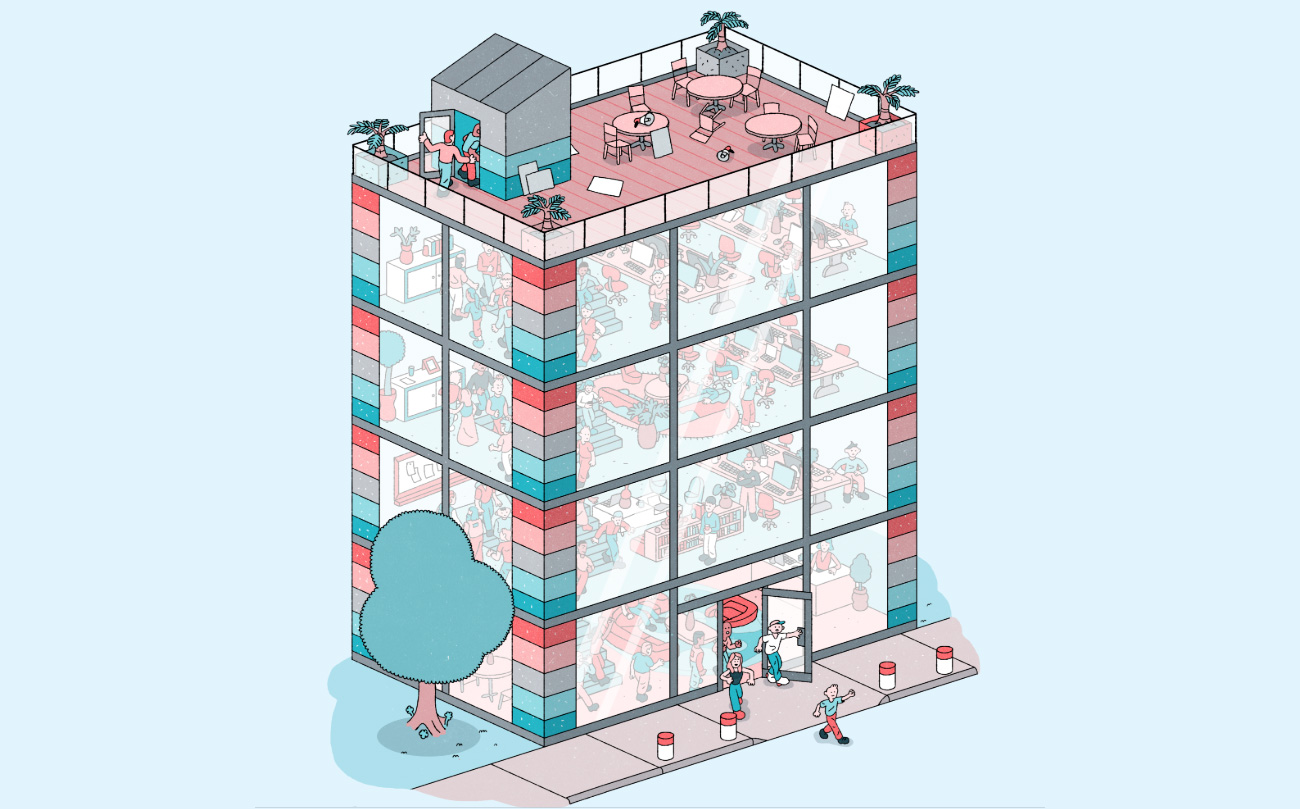Isometric drawing: A designer'due south guide
Isometric drawing is a class of 3D cartoon, which is set out using 30-degree angles. It is a type of axonometric cartoon so the same scale is used for every axis, resulting in a non-distorted epitome. Since isometric grids are pretty easy to set up, one time you understand the basics of isometric drawing, creating a freehand isometric sketch is relatively simple.
This post explains all you need to know almost isometric drawing. You'll learn exactly what defines an isometric drawing, how information technology differs from one-point perspective, what to practice to go started creating your own isometric project, and even more.
Drag your art skills farther by post-obit the tutorials in our how to depict guide (which will teach you lot how to depict pretty much anything), and you can also utilize this roundup of the art techniques yous should know virtually.
What is isometric drawing?
An isometric drawing is a 3D representation of an object, room, building or design on a 2D surface. Ane of the defining characteristics of an isometric cartoon, compared to other types of 3D representation, is that the last image is non distorted. This is due to the fact that the foreshortening of the axes is equal. The discussion isometric comes from Greek to hateful 'equal measure'.

Isometric drawings differ from other types of axonometric drawing, including dimetric and trimetric projections, in which different scales are used for different axes to requite a distorted terminal epitome.
In an isometric cartoon, the object appears as if it is beingness viewed from in a higher place from one corner, with the axes beingness set out from this corner bespeak. Isometric drawings begin with one vertical line along which 2 points are divers. Any lines ready out from these points should exist constructed at an angle of 30 degrees.
Isometric drawing vs one-point perspective
Both isometric drawings and one-point perspective drawings use geometry and mathematics to present 3D representations on 2D surfaces. 1-point perspective drawings mimic what the homo eye perceives, so objects announced smaller the further away they are from the viewer. In contrast, isometric drawings utilise parallel projection, which means objects remain at the same size, no thing how far away they are.

Basically, isometric drawing doesn't apply perspective in its rendering (i.e. lines don't converge as they movement away from the viewer). Isometric drawings are more useful for functional drawings that are used to explicate how something works, while 1-point perspective drawings are typically used to give a more sensory idea of an object or space.
How to draw an isometric cube
Drawing a cube using isometric project is very easy. You will need a piece of newspaper, ruler, pencil and protractor (or for the shortcut version, using gridded paper, spring to the next section).
Using the ruler, draw a vertical line on the folio, and marker three equally spaced points along information technology. Draw a horizontal line through the everyman bespeak, and using the protractor, mark out a 30 degree angle up from the line on either side. Draw a line back through the lowest point from the 30 degree angle on each side.
Repeat this step through the middle point and the aforementioned through the pinnacle signal, but with the top point, mark out the bending downwards. The lines from the second and third point will cross at a certain point, and from this intersection, draw a vertical line down towards the angled lines coming from the lesser point. You should be able to come across the form of the cube where all of the lines intersect.
Using an isometric grid
For all the cheats out there who don't accept the necessary tools (or inclination) to create an isometric projection, there is a foolproof way to bash out your axonometric drawing: only use an isometric grid. The design can exist downloaded online, and will save yous lots of time and endeavor.
Alternatively, learn how to set up your own grid in Illustrator by following the video tutorial below.
Once your eyes become accustomed to the trickery of the triangular pattern, you will immediately notice how the isometric works. The super handy matter about the grid is that information technology already has all of the 30 degree angles set for you. This tutorial (opens in new tab) walks you through how to describe a cube using an isometric grid.
The benefits of isometric drawing
Isometric drawings are very useful for designers – especially architects, industrial and interior designers and engineers, as they are ideal for visualising rooms, products, and infrastructure. They're a great manner to speedily test out different design ideas.
In that location are a number of other situations in which isometric projection is useful. In wayfinding systems, for example in museums or galleries, an isometric wall maps can prove visitors where they are in the building, what is going on elsewhere, and how to get to go effectually.
Some of the all-time infographics use isometric projection to enable them to show more information than would be possible in a 2D drawing. Some of the best logos also use this arroyo to create impact.

Exploded isometric drawings are useful for revealing parts of a production that might exist hidden or internal. They're used by architects, engineers and product designers the globe over to amend explain the intricacies of a design. To create an exploded isometric, you demand to know the detailed inner workings of whatever you are drawing, so they're are normally used at the final design phase for presentations to clients.
Isometric drawing examples

Illustrator and art managing director Mauco (opens in new tab) created this isometric map to represent the areas surrounding the SPECTRUM building in London. It shows just the main roads and landmarks to help people orientate themselves.

Jing Zhang (opens in new tab) is an illustrator working mainly with clients in the advertizing industry. She'south built a particular reputation for her detailed exploded isometric designs, including this cosmos for Slack. Information technology's function of a series to back-trail the brand'southward stories, focusing on elements such as a happy mobile workforce (above).

This design was created for an article in the The California Sunday Magazine, entitled The Tech Revolt and exploring political activism in the tech industry. In information technology, illustrator Tim Peacock (opens in new tab) uses isometric projection as a manner of revealing the inner workings of a Silicon Valley function block.

MC Escher was perchance the male monarch of using isometric projections in his artworks. His use of parallel geometries to depict mind-bending staircases that become nowhere will be familiar to most. In Cycle (1938), is it clear how isometric projection comes into his work, from the pattern on the ground to the use of cubes that turn into steps.
Read more than:
- Pencil drawing techniques: Pro tips to acuminate your skills
- Incredibly realistic pencil drawings
- Sketching tips: Strop your skills
Related articles
Source: https://www.creativebloq.com/features/isometric-drawing


casino trực tuyến w88 là nhà cái casino trực tuyến uy tín hàng đầu tại Châu Á và Thế giới Mang đến cho người chơi những trải nghiệm hết sức độc đáo.Hỗ trợ link vào w88, nạp tiền w88 và rút tiền w88 an toàn và nhanh chóng. Nhanh tay đăng ký w88 để nhận thêm nhiều chương trình khuyến mãi hấp dẫn tại nhà cái.
BalasHapus